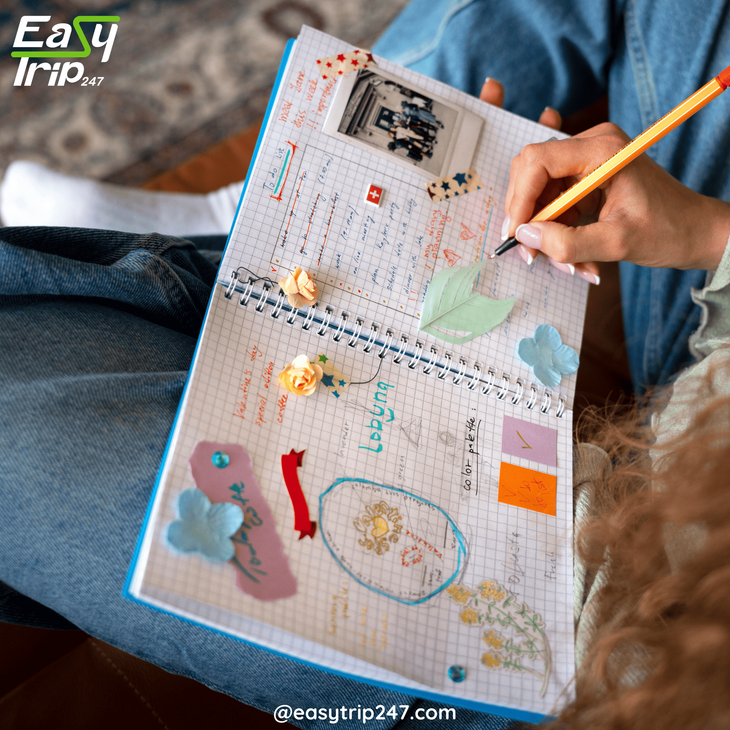
One of the best ways to keep the essence of your adventures alive is by creating a memory book. A well-crafted memory book can serve as a tangible reminder of your “Easy Trip,” encapsulating the joy, excitement, and experiences that make every journey unique. If you're wondering how to put together a stunning memory book for your trips, this guide will provide you with practical steps and tips on making the process as enjoyable and easy as the trip itself!
Why Create a Memory Book for Your Easy Trip?
Travel memories often fade with time, but a memory book offers a way to freeze those precious moments. A memory book is not just a scrapbook—it's a personal archive of your experiences, emotions, and stories. It can include photos, ticket stubs, postcards, and handwritten notes that capture everything from the breathtaking landscapes to the simple moments that made your “Easy Trip” so unforgettable. Creating a memory book allows you to celebrate the moments that shaped your journey and relive them whenever you want.
Step 1: Gather Your Supplies
To begin crafting your memory book, you first need to gather all the necessary materials. Don’t worry about having the most professional supplies—this process is meant to be fun and simple! The key is to collect all the mementos from your “Easy Trip” that can help tell the story of your travels.
● Photos: These are the heart of your memory book. From breathtaking views to candid shots with friends, photos are what will make your book come alive.
● Tickets, Maps, and Postcards: Small paper souvenirs from the places you've visited will add texture and detail to your book.
● Decorative Elements: Use fun stickers, washi tape, or colored pens to add extra flair to your pages.
● A Journal or Notepad: If you didn’t keep a travel journal during your trip, now is the perfect time to jot down your thoughts. Even brief notes will help recall the emotions and experiences that made your “Easy Trip” unique.
By organizing everything in advance, you can make the process of creating your memory book as “Easy” as the trip itself.
Step 2: Choose the Right Format
When it comes to memory books, there are plenty of options available. You can choose from traditional scrapbooks or digital photo books. For those who prefer a hands-on approach, a scrapbook can be a fun and creative outlet to showcase your favorite photos, mementos, and notes. On the other hand, if you’re looking for a more streamlined and polished approach, a digital photo book can help you create a beautifully printed version of your memories with just a few clicks.
If you decide on the digital route, there are many online platforms that make creating a custom photo book easy and affordable. Some even allow you to upload your photos directly from social media, making the process incredibly simple. Whether you opt for a physical scrapbook or a digital creation, the key is to make sure it represents the spirit of your “Easy Trip.”
Step 3: Organize Your Memories
Once you’ve gathered all your materials, it’s time to start organizing your memories. Take some time to reflect on the highlights of your “Easy Trip” and consider what moments stand out the most. Were there particular places, activities, or people that left an impact on you? Did you experience something spontaneous or unexpected that you want to highlight? Keep these moments in mind as you begin sorting through your photos, tickets, and other memorabilia.
You can organize your memory book chronologically, or if your trip was particularly adventurous, you might want to group your memories by location or theme. For instance, you could have sections like “Adventure Activities,” “Local Cuisine,” or “Sunset Views.” Organizing your book will not only help make the process of putting it together easier, but it will also create a coherent flow for you to follow as you relive your “Easy Trip.”
Step 4: Tell the Story
The most powerful memory books aren’t just filled with photos and tickets—they tell a story. As you organize your book, think about the narrative you want to create. Each page should capture a moment, whether that’s the feeling of waking up to a sunrise or the joy of exploring a new city with friends. You can include captions, handwritten notes, and quotes to add context to the photos and souvenirs. For example, a photo of a beautiful mountain view might include a note that reads, "Hiking up to the summit was exhausting, but the view made the entire trip worth it!"
This is your chance to document the emotions and the atmosphere of your “Easy Trip,” rather than just a list of things you did. Including personal stories and reflections will add depth to your memory book and make it much more meaningful.
Step 5: Add Personal Touches
One of the best parts of creating a memory book is that it’s entirely your own. This is the time to get creative and add personal touches that make the book uniquely yours. Perhaps you have a favorite poem, song lyric, or funny quote that you associate with your trip. Include it in your memory book as a way to evoke the feelings and memories tied to those words. You might also want to add some sketches or doodles to give it a more artistic flair.
If you have family or friends who accompanied you on your “Easy Trip,” you could ask them to contribute their own memories and thoughts to the book. This collaborative effort can make the memory book even more special, as it becomes a shared experience between everyone involved.
Step 6: Create a Timeline
For those who want to add structure to their memory book, creating a timeline of your “Easy Trip” can be a great way to organize your pages. It doesn’t have to be formal—just an outline of the major events that happened during your journey. A timeline allows you to trace the progression of your trip, from the excitement of departure to the sweet nostalgia of returning home.
You can use a simple design, such as a dotted line connecting key dates and moments, or you could use visuals like arrows and symbols to make it more fun. A timeline helps you reflect on how your “Easy Trip” unfolded, and it gives the book a clear, organized layout.
Step 7: Keep It Simple
While it’s tempting to overdo it with embellishments, sometimes less is more when it comes to memory books. The goal is to keep the focus on the memories and experiences that made your “Easy Trip” special. Stick to a few well-placed decorations or personal touches rather than overwhelming each page with too many elements. By keeping your design simple, you allow your photos and stories to take center stage, making your book both visually appealing and emotionally impactful.
Step 8: Share the Love
Once your memory book is complete, don’t keep it to yourself! Sharing your memories with loved ones can be a great way to relive your “Easy Trip” together. You can host a small gathering where you show off your memory book, or share it digitally with friends and family who may have missed out on your adventure. Either way, sharing your book allows others to experience the joy and excitement of your journey.
Creating a memory book of your “Easy Trip” is a rewarding experience that can help you preserve the memories that matter most. Whether you choose to create a scrapbook, a digital photo album, or a personalized timeline, the process itself will bring you closer to the moments that made your trip unforgettable. Remember, there’s no right or wrong way to create a memory book—it’s all about telling your story in a way that feels authentic to you. So, go ahead and start putting together your “Easy Trip” memory book today—you’ll be grateful to have those memories to look back on for years to come.
Design Your Tour Today And Get A Quote. Contact Us Here: +84.975.504.825
Source: Easytrip247 Team compiled.
